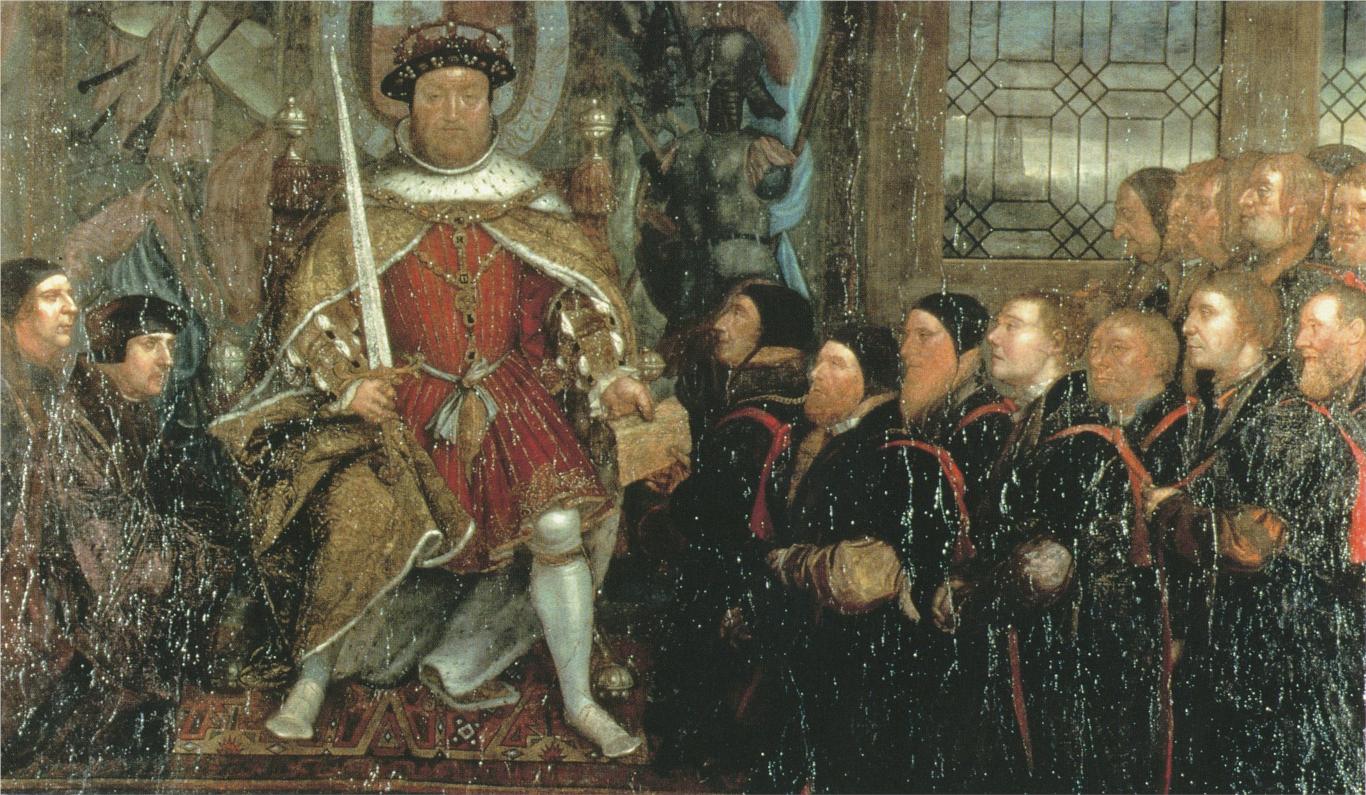
Historical
Oriental Rugs & Carpets
in Medieval European Paintings
Main Page
|
|

Henry VIII and the Barber Surgeons. Oil on paper mounted on canvas, 160 × 280
cm, Royal College of Surgeons of England, London.
Holbein prepared this cartoon for a large-scale work to commemorate the grant of
a royal charter to the Company of Barbers and the Guild of Surgeons on their
merger in 1540. Presumably at the request of his clients, Holbein based the
design on that of the miniatures painted on Tudor charters of privileges.
Working from an old sketch, Holbein portrayed King Henry, who did not sit for
him on this occasion, more as an icon than as a living person The members of the
company, in contrast, were conceived as individuals. The figures of Sir William
Butts and the doctor John Chambers are closely related to portraits of them by
Holbein (left), though the overpainting has made this less clear (art historian
John Rowlands reproduces an infra-red photograph of the underdrawing). Beneath
the overpainting and additions (such as the windows) by later hands, this
cartoon reveals Holbein's original conception for the final work. The painting
itself, however, departs markedly from it in places, for example in the second
row of figures on the right and in the background. It was for a long time
believed that this version was a copy, but X-rays have revealed that, under the
paint, the paper is pricked all over, following the outlines of the composition.
This shows that it was used to mark up the original version of the painting. The
surgeons, who retained ownership of the painting, bought the cartoon in 1786
from a French art dealer.